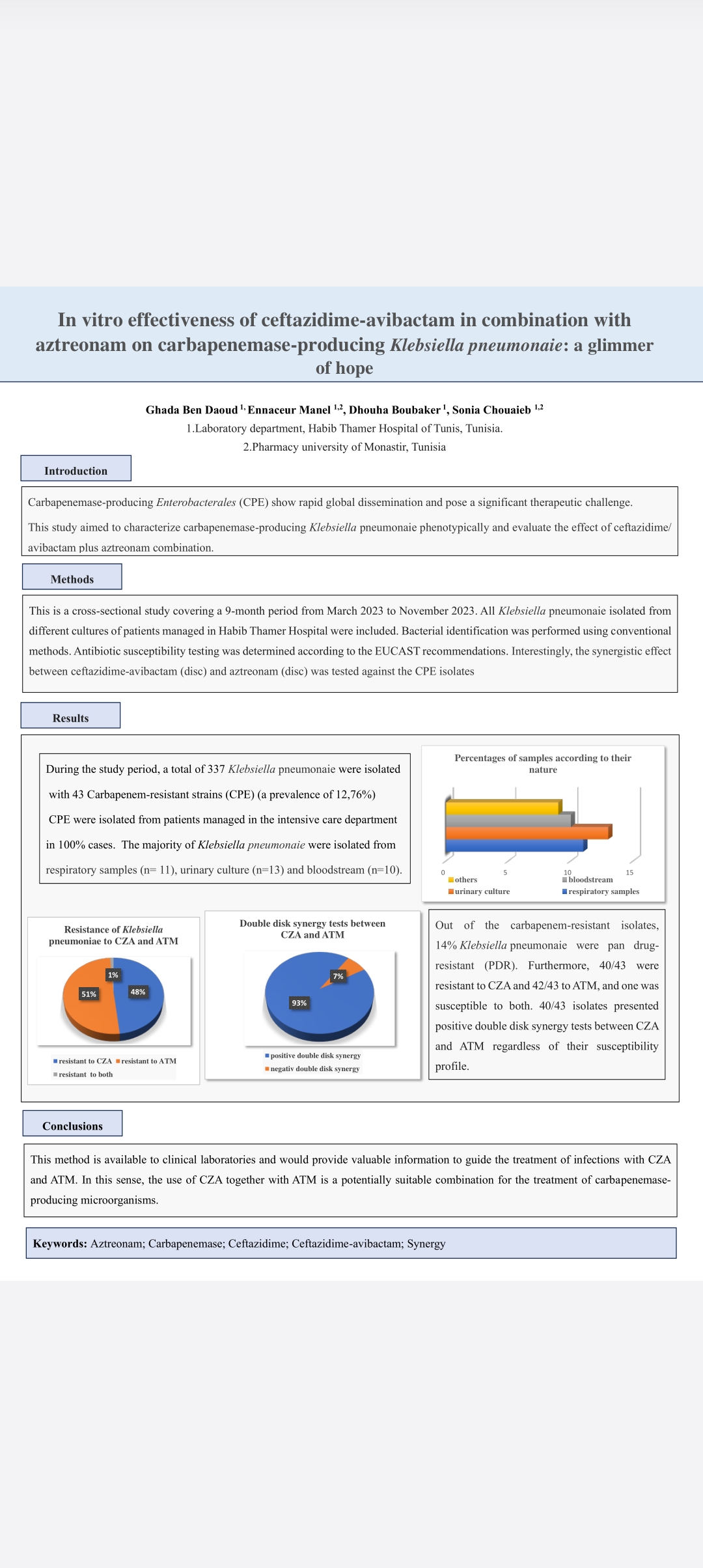Manel Ennaceur
Conference 2024 Poster
Poster Title
In vitro effectiveness of ceftazidime-avibactam in combination with aztreonam on carbapenemase-producing Klebsiella pneumonaie: a glimmer of hope
Authors and Affiliations
Ennaceur Manel 1,2
Ghada Ben Daoud 1
Dhouha Boubaker 1
Sonia Chouaieb 1,2
1.Laboratory department, Habib Thamer Hospital of Tunis , Tunisia.
2.Pharmacy university of Monastir, Tunisia
Abstract
Background
Carbapenemase-producing Enterobacterales (CPE) show rapid global dissemination and pose a significant therapeutic challenge.
This study aimed to characterize carbapenemase-producing Klebsiella pneumonaie phenotypically and evaluate the effect of ceftazidime/ avibactam plus aztreonam combination.
Methods
This is a cross-sectional study covering a 9-month period from March 2023 to November 2023. All Klebsiella pneumonaie isolated from different cultures of patients managed in Habib Thamer Hospital were included. Bacterial identification was performed using conventional methods. Antibiotic susceptibility testing was determined according to the EUCAST recommendations. Interestingly, the synergistic effect between ceftazidime-avibactam (disc) and aztreonam (disc) was tested against the CPE isolates.
Results
During the study period, a total of 337 Klebsiella pneumonaie were isolated with 43 carbapenem-resistant strains (CPE) (a prevalence of 12,76%). CPE were isolated from patients managed in the intensive care department in 100% cases. The majority of Klebsiella pneumonaie were isolated from respiratory samples (n= 11), urinary culture (n=13) and bloodstream (n=10).
Out of the carbapenem-resistant isolates, 14% Klebsiella pneumonaie were pan drug-resistant (PDR). Furthermore, 40/43 were resistant to CZA and 42/43 to ATM, and one was susceptible to both. 40/43 isolates presented positive double disk synergy tests between CZA and ATM regardless of their susceptibility profile.
Conclusions
This method is available to clinical laboratories and would provide valuable information to guide the treatment of infections with CZA and ATM. In this sense, the use of CZA together with ATM is a potentially suitable combination for the treatment of carbapenemase-producing microorganisms.


Leave A Comment